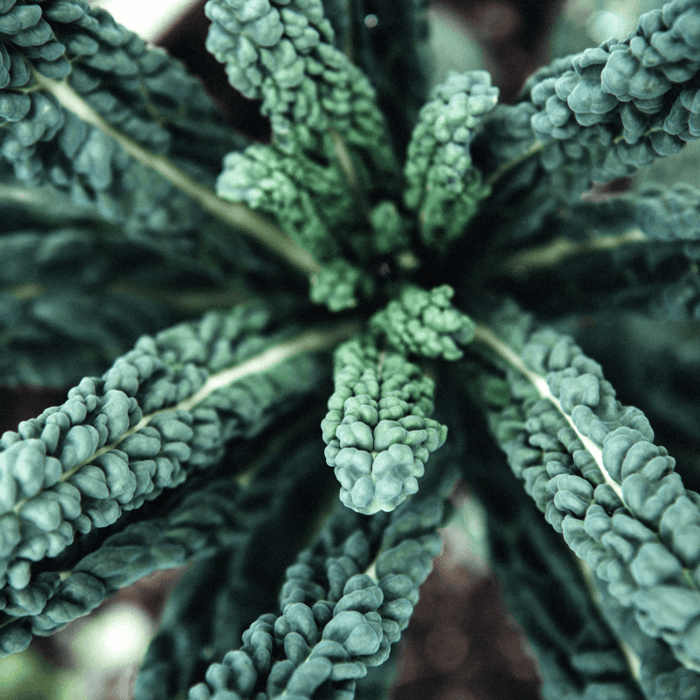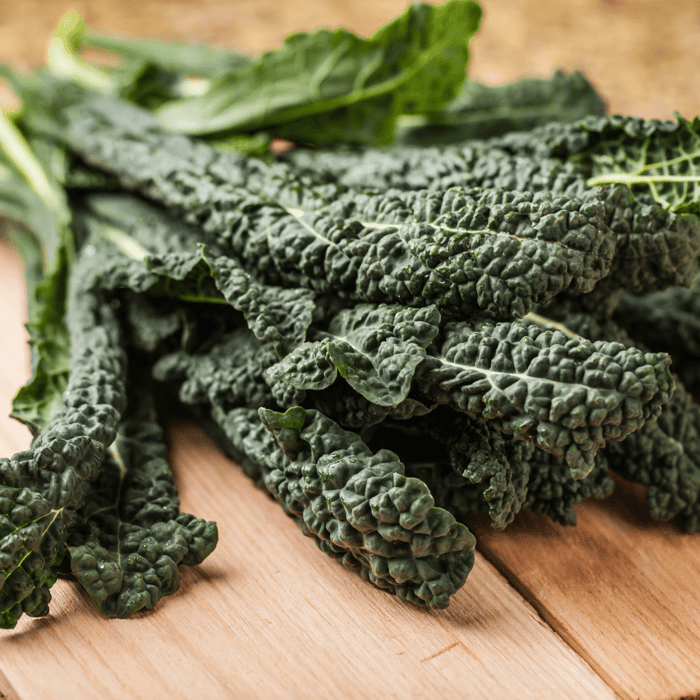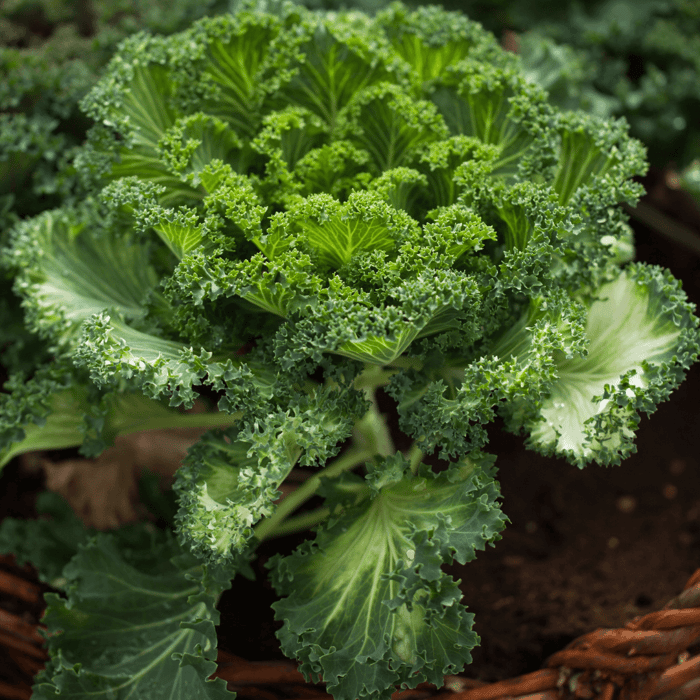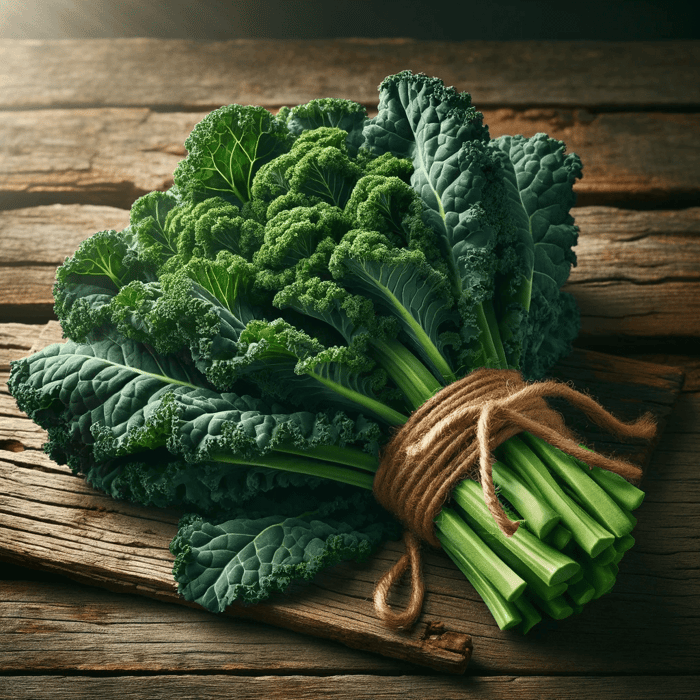As a gardener, I have always been fascinated by the myriad varieties nature offers. Among my favorites is lacinato kale, a unique and flavorful vegetable that deserves a special place in every garden. In this in-depth article, we will explore what is lacinato kale and what sets it apart from other types of kale, and why it is such an excellent addition to your vegetable garden.
1. Lacinato Kale: An Introduction
Lacinato kale, also known as dinosaur kale, black Tuscan kale, Tuscan kale, cavolo nero, or dino kale, is a variety of kale with a distinct appearance and taste. Unlike the more common curly kale, lacinato kale has heartier, dark blue-green leaves that are long, narrow, and slightly wrinkled. The kale plant grows up to 2-3 feet tall and resembles a small palm tree, with its leaves and stems forming a rosette around a central stalk.
As an heirloom seed, lacinato kale has been cultivated for centuries in Tuscany, Italy. It is highly valued for its nutritional content, versatility in cooking, and unique flavor profile. Learning how to grow lacinato kale is easy for beginners and experienced gardeners.
2. The Difference Between Lacinato and Curly Kale
While both lacinato and curly kale are members of the Brassica family, there are a few key differences that set them apart:
- Appearance: Lacinato kale has dark blue-green, narrow leaves with a slightly wrinkled texture, while curly kale has bright green leaves with frilly, ruffled edges.
- Texture: Lacinato kale is known for its tender leaves and stems, which make it easier to work with in the kitchen. Curly kale, on the other hand, has a more rigid texture and requires more preparation before cooking.
- Flavor: Lacinato kale has a slightly sweeter, milder taste than curly kale, which can be more bitter and pungent.
Lacinato Kale Seeds
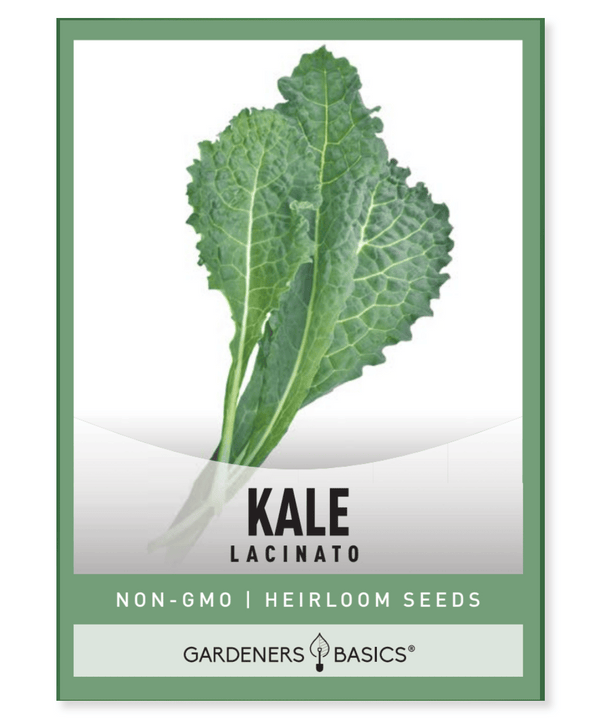
$2.49
Lacinato Kale Seeds – Heirloom, Non-GMO, Non-Hybrid, Open-Pollinated | Planting and Growing Guide Elevate your garden with Lacinato Kale seeds, a must-have for any home gardener seeking nutrient-rich leafy greens! Also known as Dinosaur Kale, Tuscan Kale, or Black Kale,… read more
3. Nutritional Benefits of Lacinato Kale
Lacinato kale is packed with nutrients, making it a superfood worth incorporating into your diet. Some of its key health benefits include:
- High in vitamins A, C, ad essentialK
- Rich in antioxidants
- Good source of dietary fiber
- Contains minerals such as calcium, potassium, and iron
- Low in calories and fat
These nutrients contribute to a healthy immune system, strong bones, and overall well-being.
4. Culinary Uses of Lacinato Kale
Lacinato kale is incredibly versatile in the kitchen. Here are some popular ways to enjoy this nutritious vegetable:
- Salads: Raw lacinato kale can be used in salads, either on its own or mixed with other greens. Simply massage the leaves with a bit of olive oil and your favorite dressing to tenderize them.
- Sautéed: Sauté lacinato kale with garlic and olive oil for a quick, tasty side dish.
- Soups and stews: Add chopped lacinato kale to soups and stews for added texture, flavor, and nutrition.
- Smoothies: Blend lacinato kale with fruits, yogurt, or milk for a nutrient-packed smoothie.
- Chips: Bake lacinato kale leaves with olive oil and your favorite seasoning for a healthy snack.
5. Selecting and Storing Lacinato Kale
When purchasing lacinato kale, look for vibrant, dark blue-green leaves, and free of yellowing or wilting. The leaves should be firm and crisp, with no signs of damage or pests.
To store lacinato kale, wrap the unwashed leaves loosely in a paper towel and place them in a plastic bag. Store the bag in the crisper drawer of your refrigerator for up to a week. It's best to wash the leaves just before using them to avoid promoting spoilage.
6. Growing Lacinato Kale in Your Vegetable Garden
Although this article mainly focuses on lacinato kale, growing it's worth mentioning that growing lacinato kale can be a rewarding experience. If you're considering adding this variety of kale to your vegetable garden, here are a few tips to keep in mind:
- Lacinato kale seeds should be sown in early spring or fall, as the plant prefers cooler weather.
- Plant the seeds about 1/4 inch deep and 12-18 inches apart in well-draining soil with a 6.0-7.0.
- The lacinato kale plant grows best in full sun to partial shade.
- Keep the soil consistently moist, but avoid overwatering.
- Harvest the leaves from the bottom up, allowing the plant to continue growing and producing more leaves.
 7. Lacinato Kale Varieties
7. Lacinato Kale Varieties
Lacinato kale is just one of many types of kale available to gardeners and cooks. Other popular varieties include:
- Curly kale: As mentioned earlier, this is the most common type of kale, characterized by its bright green, frilly leaves.
- Redbor kale: This variety has deep red, ruffled leaves that add color to your garden and dishes.
- Russian kale: With its fringed, gray-green leaves and purple stems, it is attractive and delicious.
- Baby kale: Harvested when the leaves are small and tender, baby kale is a milder and more delicate option.
8. Lacinato Kale: A Garden Staple
In conclusion, now you know what is lacinato kale; it is a flavorful, nutritious, and versatile variety of kale that deserves a place in your garden and on your plate. Its distinct appearance, tender texture, and rich history make it a standout among other types of kale. Whether a seasoned gardener or a novice, lacinato kale is a beautiful addition to your vegetable garden and culinary repertoire.



